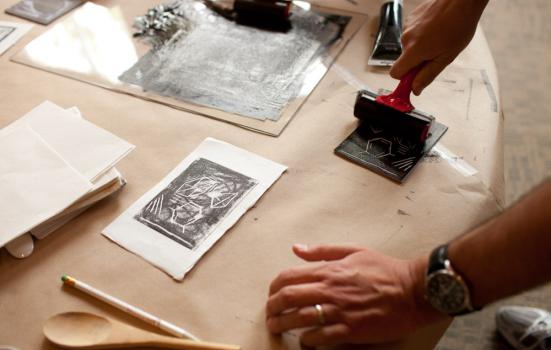The Scottish arts sector is being consulted on a new ‘Creative Industries Strategy’ that will determine priorities for the next two years.

Chemical Heritage Foundation [CC BY-SA 3.0] via Wikimedia Commons
The Scottish arts and cultural sector is being invited to give feedback on a new strategy document that will shape how the creative industries are supported up until April 2017. Creative Scotland’s draft ‘Creative Industries Strategy 2015-17’ is one of series of documents produced by the funding body expanding on the ambitions of its 2014 ten-year strategic plan, ‘Unlocking Potential, Embracing Ambition’.
The strategy aims to support businesses that have “creativity at their core”, as well as encouraging creativity and innovation across all businesses in Scotland. It is framed around the four priorities of the Scottish Government Economic Strategy 2015 – investing, supporting innovation, promoting inclusivity, and promoting Scotland internationally.
The role of Creative Scotland is outlined as three-fold: as an advocate, championing success and identifying potential; as a broker, bringing together strategic partners; and as an investor, providing and negotiating new resources.
Creative Scotland plans to work with partners to achieve “better co-ordination” of investment in the creative industries and to build skills. Special mention is given to supporting micro-enterprises all across Scotland, and making sure the digital infrastructure they need is in place.
The strategy recognises the “diverse and fragmented” nature of the creative industries, saying: “we have work to do to shift the understanding and perception of the creative industries from a top-down, infrastructure-led imperative, to something that is owned and celebrated by those working on the ground.”
Clive Gillman, Director of Creative Industries at Creative Scotland, said: “For this strategy to succeed, we need to ensure it’s tuned to meet as many of the needs of the 14,000+ businesses that we know are active in Scotland. I very much look forward to hearing what people have to say through this consultation.”
Creative Scotland will be working with the other partners of Scotland’s Creative Industries Partnership – Scottish Local Government, Scottish Enterprise and Highlands and Islands Enterprise – to deliver the strategy. After the final strategy is published next year, a ‘work plan’ will be produced, outlining who will be engaged with each of the actions, the resources needed, a timeline for delivery and success measures. An assessment of the impact and value of the creative industries will also be undertaken.
The strategy is shared in its draft form and responses can be submitted via an online form up until Monday 16 November 2015. The final strategy will be published at the end of January 2016.




